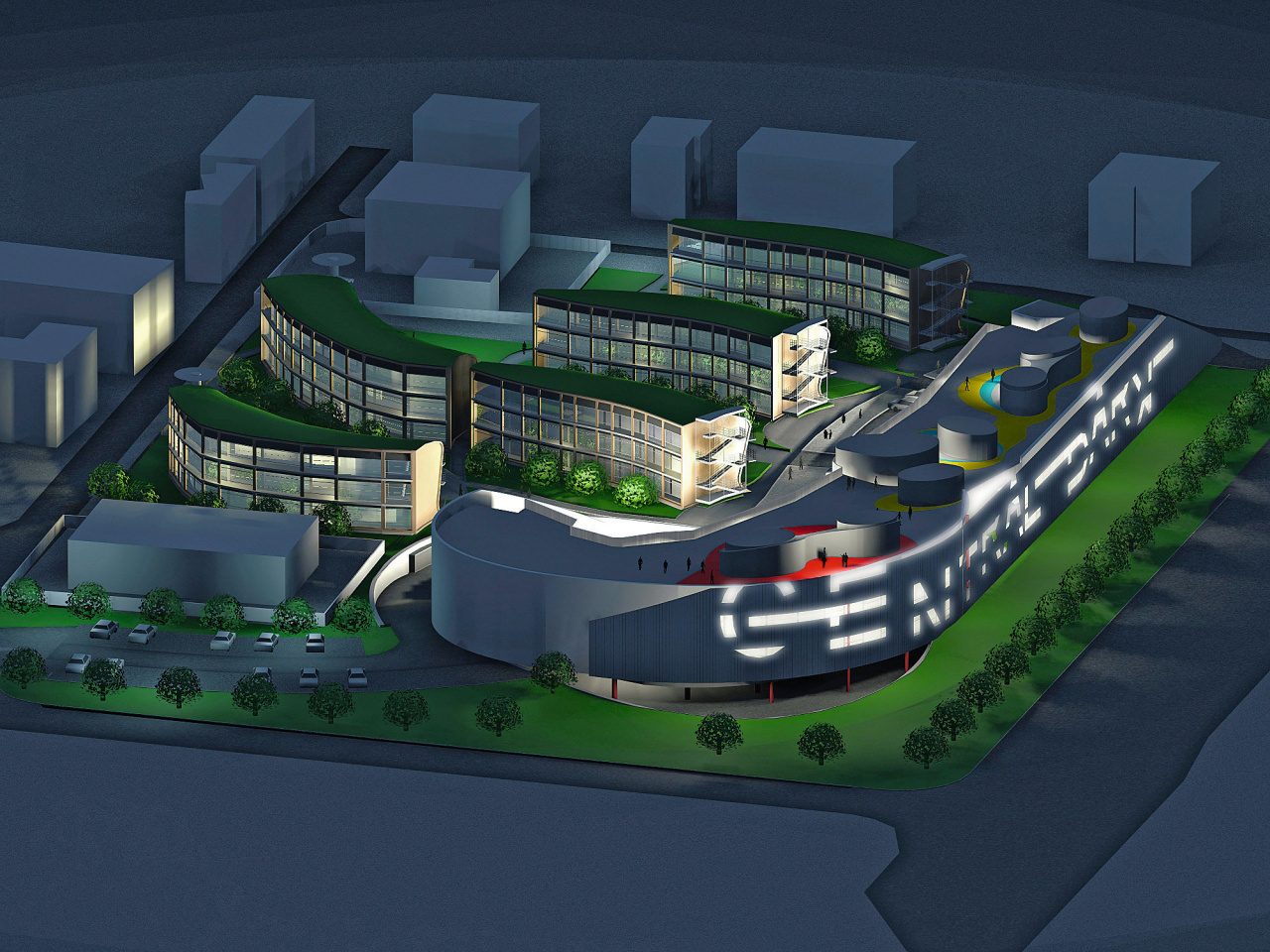Naturally Cool
No need for heating or air conditioning sophisticated engineering will keep these apartments at a comfortable temperature all year round
In an AGE of rapidly depleting resources, the growing realisation is that it is not just fashion to live in an earth-friendly way, but necessity. As consumers, we want to feel we are leaving only a small footprint on the planet: and so the demand for environmentally-friendly products increases.
This has had an impact on architecture, particularly through a growing interest in housing which puts the minimum drain on resources. The challenge now for architects and engineers is to find ways of designing environmentally sustainable buildings that are also architecturally interesting and functional.
Central Park, a housing and shopping complex under construction in the northern Italian industrial town of Schio, is designed around two principal aims: to use minimal energy and emit very little carbon. To achieve this, sophisticated engineering techniques have been employed to eliminate the need for conventional heating and cooling equipment. This consequently frees up capital, which can be spent on the building fabric.
The science behind the project suggests that careful planning of the building materials in relation to the climate will keep the 90 apartments at a comfortable temperature all year round. The design aims to maintain an average room temperature above 19°C in winter, and at least 2°C cooler than the outdoor temperature in summer.
Katrine Falbe-Hansen, of engineering consultancy Arup, made some key recommendations in relation to the building physics, before construction began.
"Firstly, the apartments needed to have up to 300mm of insulation, with triple-glazing along the south-facing facade. This reduces heat loss to such an extent that the apartments will be warmed by sunlight, body heat and the heat generated by cooking, lighting and appliances. No extra heating will be necessary," she says.
Building materials such as dense concrete have been specified for their innate ability to absorb, store and release heat. In winter, the heat will be absorbed by the concrete during the day, and released into the room when the temperature drops at night. In summer, the concrete will absorb any heat not stopped by sun shading and blinds. When this excess heat is released into the room it will be removed by ventilation.
For the theory to work, the building must be airtight. In conventional houses, heat escapes through a variety of barely discernible gaps, such as between window frames and walls. In this project, special attention will be paid to the way joints are sealed, in order to make the building airtight, so that ventilation is controlled.
"Without air conditioning, residents will need to let more cool air in by leaving windows open on security stays on warm summer nights," says Falbe-Hansen.
Each apartment has a large, south-facing terrace or sunspace,' letting the sun in and providing a thermal buffer during the winter, and creating a shaded porch to minimise heat gain in summer. With glazed sliding panels right along its external facade, and glazed doors and windows between the sunspace and the apartment, the area can be shut in winter to form a conservatory which traps heat. In summer, the panels on the external facade can be left open when necessary to reduce heat build-up, thus creating a shaded balcony. Solar blinds will be provided to help block the sunlight in summer, thereby preventing the thermal mass from absorbing and storing too much heat.
Although the apartment buildings are curved, no dwelling is angled more than 20 degrees away from due south in order to maximise the amount of sun each receives. Buildings are placed a suitable distance apart to reduce overshadowing, while the roof line angles upward by 25 degrees to allow the low winter sun to filter deep into the apartments.
In terms of heat-efficient building design, clearly what works well in summer will not necessarily work well in winter, and vice versa. The design of the Schio Central Park development is a matter of carefully balancing the needs of each season.
Summer temperatures in Schio peak around 30°C, but drop below 0°C in winter. Thermal modelling indicates that the apartments are likely to be warmer than their target of 19°C in winter. On a particularly sunny winter day, the modelling suggests the internal temperature could rise into the high 30s. However, with correct use of the sunspace and windows for ventilation, temperatures can be controlled. Clearly even the cleverest design can benefit from a little manual help.
One possible problem identified at the design stage was that an unoccupied apartment could become a heat drain to its neighbours, as the normal internal heat gains of body heat and cooking would not be present.
For this reason, the apartments do have a radiator system, which is heated by the hot water. It is intended only to be used when an apartment is unoccupied and the minimum temperature is not maintained. If residents use the radiators when they are at home, their hot water supply will be affected.
The hot water system is energy-efficient in itself. Each dwelling has a 300-litre hot water cylinder. This is larger than average, but the extra storage is necessary since the water is heated by a much smaller coil than normal. The water takes longer to heat, but the system uses much less energy. As Falbe-Hansen points out, "It would be unusual for a resident to use all 300 litres of hot water in one go".
If the science works as predicted and the buildings are comfortable to live in, Schio Central Park could represent a landmark example of environmental sustainability.
Story by: Trendsideas
Home kitchen bathroom commercial design
Connected to the ocean
Masculine meets mixed use
Contrast and connection







